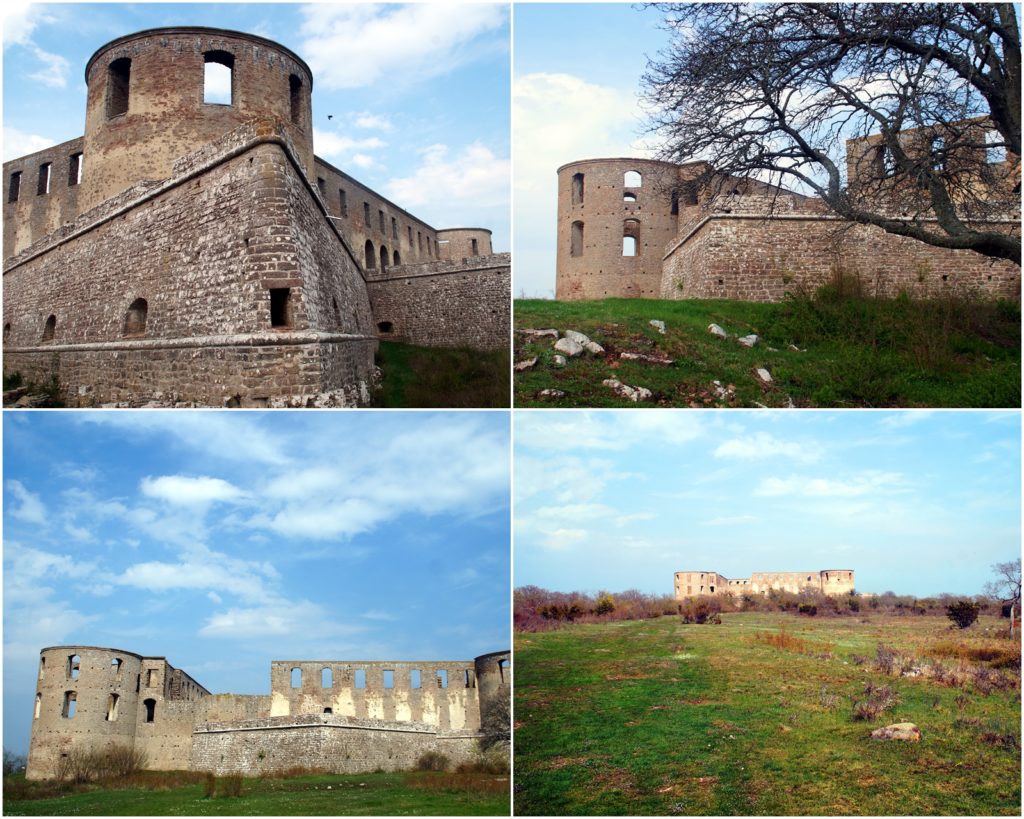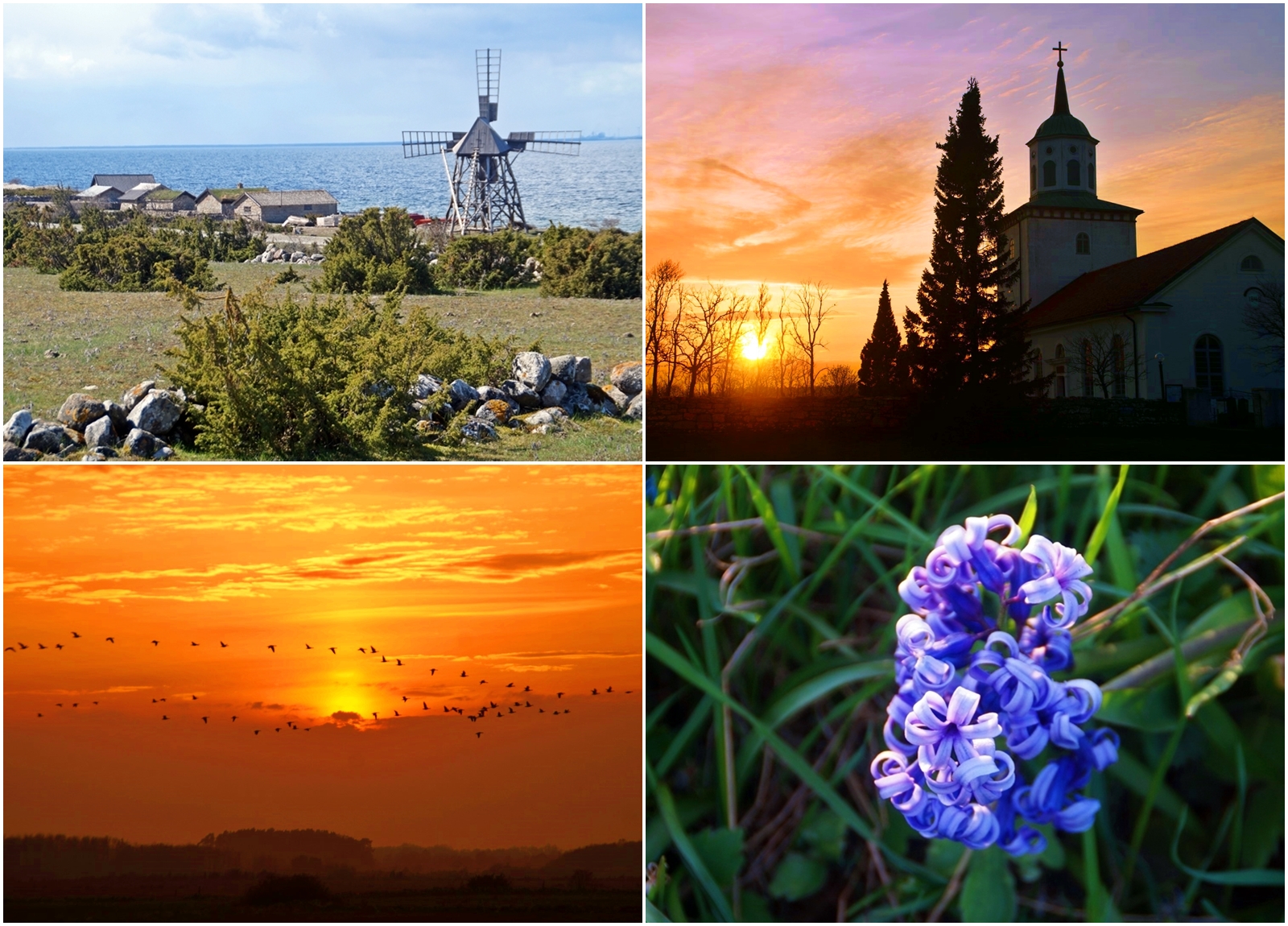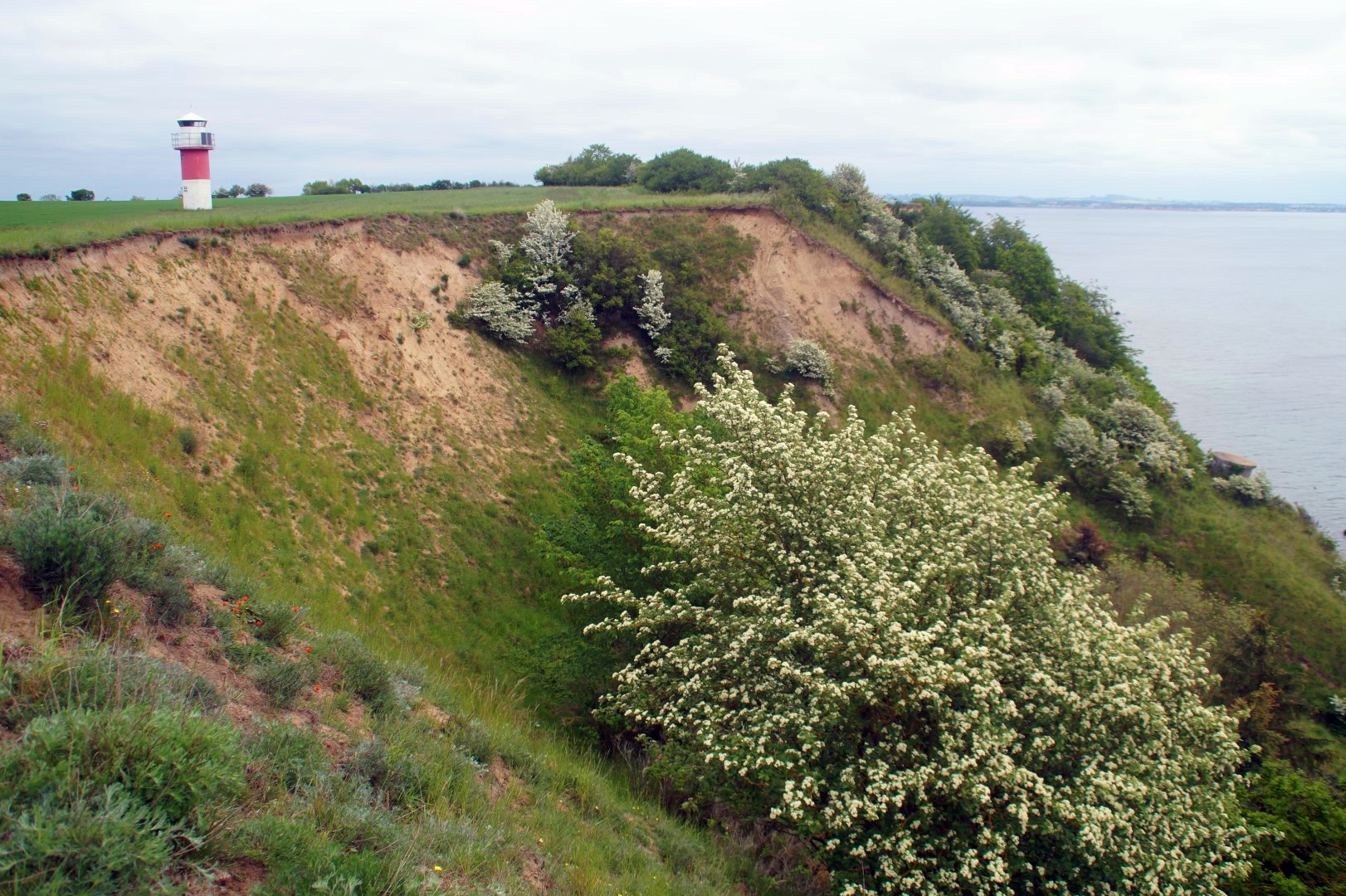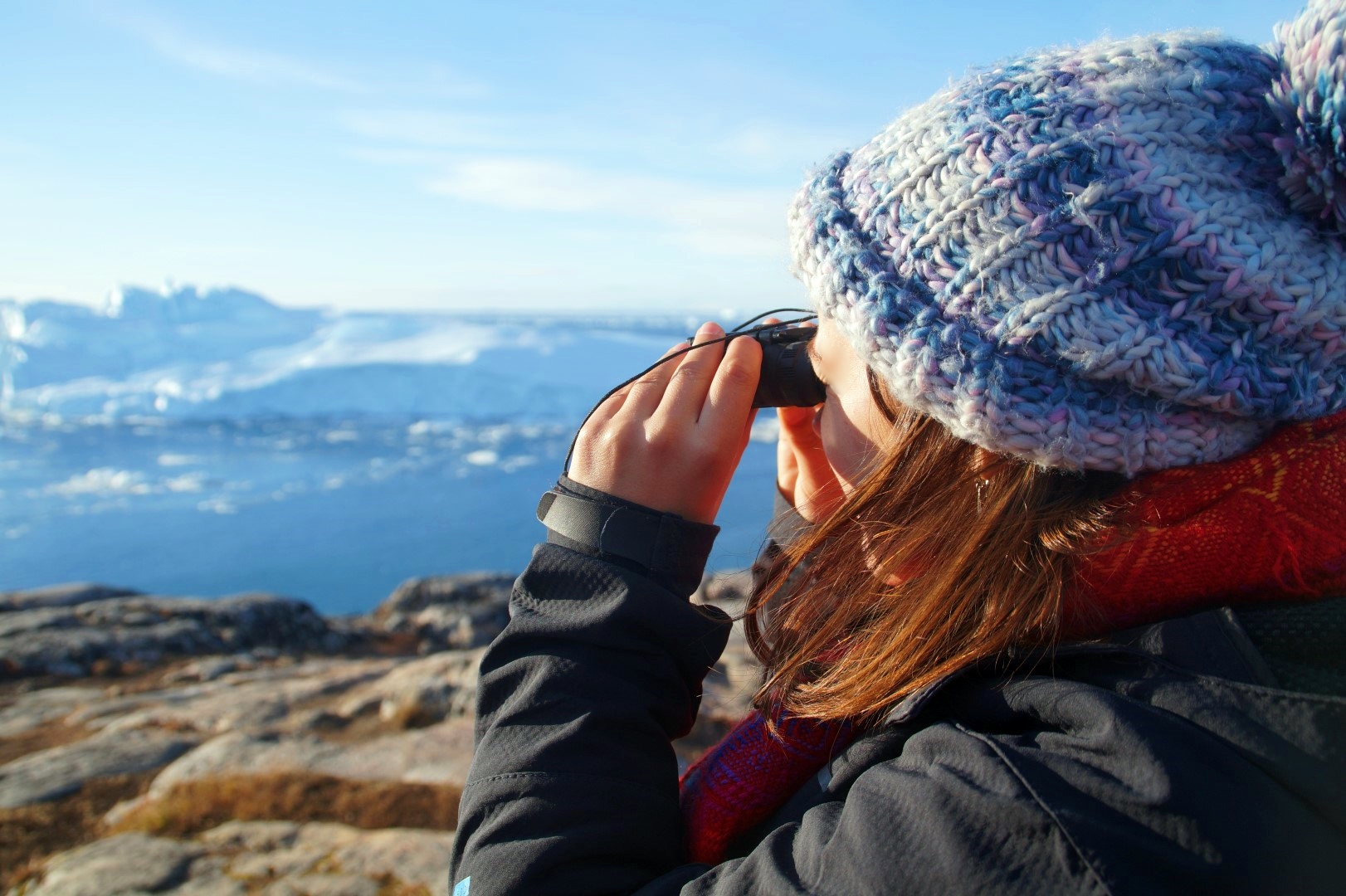Öland a 137 km long island off the east coast of Sweden, and it’s the perfect idyllic place to go to de-stress in beautiful surroundings. I travelled there in the middle of the exam period last Spring, and it honestly couldn’t have been a more perfect getaway for me! I was there for three days and decided to rent a car so I could see EVERYTHING. I managed to see everything on my must-see list plus a few places that I came across while driving, and although I knew there would be plenty of archaeological sights and beautiful nature to enjoy, I didn’t expect to be blown away quite as much as I was. I absolutely loved Öland, and therefore I’ve decided to share my favourite places on the island with you, so you can enjoy them too!
Below you’ll find a list of 13 incredible places to discover on Öland – places that you simply must include on your roadtrip itinerary to give you a taste of how diverse Öland truly is!
1. Borgholm Castle
In the village of Borgholm you’ll find the most famous sight on the island, Borgholm Castle, the ruins of a baroque palace constructed by Charles X Gustav in the 17th century. The first fortress on the site was built in the 13th century and rebuilt numerous times during the later centuries. In 1806, the castle was completely destroyed by a fire and became the ruin it is today.
900 meters from Borgholm Castle stands another castle, the summer residence of the royal family, known as Sollidens Slott, so you can easily combine the two castles in one walk.

2. Byrums Raukar
The north part of Öland is very rugged and most of the beaches consist of semi-large stones. One stony beach in particular is very beautiful; Byrums Raukar, where you’ll find the geological formation of a group of 120 limestone stacks which are very rich in fossils. It’s located about 1,5 km south of the village of Byrum.

3. Neptuni Åkrar
Close by the village of Byxelkrok lies another beautiful beach, the Neptuni Åkrar, which is a cobble beach that is a result from stones that eroded through the movements of waves during the last ice age. On the cobbles, it’s possible to find many fossils from Brachiopods and Trilobites, some of the earliest known groups of anthropods.
And if you walk to the very south part of the nature reserve, you’ll also discover a Viking Age graveyard!

4. Stora Grundet and Långe Erik
At the very north of Öland you’ll find the tiny island of Stora Grundet with the historic lighthouse Långe Erik from 1845 and its connected buildings from the early 1900s. There’s a parking lot close to the pedestrian bridge that you have to cross to get to the island. I recommend walking the Fyrstigen trail around the island for great views of the Grankullaviken bay. The lighthouse is only open for visitors during the summer, but the charm of visiting the place off-season is that you’ll have it all to yourself as most of the tourists on Öland go south!

5. Trollskogen
Just east of Stora Grundet is the magical Trollskogen, a windswept pine forest and nature reserve that is home to many interesting trees and mysterious historic sights. The forest is characterized by its lichen-covered pine trees, where most have been deformed by the wind over two hundred years.
The most interesting historic site in the forest is the Swiks shipwreck, a three-masted schooner from Åland that wrecked on the Northeast coast of Öland on December 21st 1926. The ship, holding a crew of seven, was on its way from Flensburg in Germany to Mariehamn on Åland when a snowstorm forced the ship to round north of Öland in order to seek shelter in the city of Kalmar, but the ship got stuck in sand dunes below the water near Trollskogen, forcing the crew to abandon the ship and escape in a lifeboat. The ship laid off the shore until a winter storm in the 1950s threw it up onto the beach, where it has stayed until this day.
There are a few hiking trails that go through the forest, but I recommend doing the longest one, which is still only 4,5 km. The trail goes past all the interesting sights and out to the edge of the forest, where you’ll see Långe Erik in the near distance.

6. Källa Gamla Kyrka
Near the village of Källa stands the oldest church on Öland, Källa gamla kyrka, a stone church which was built in the 13th century on the site of a former 11th century wooden church. The church was abandoned in the 19th century and has since remained intact with only minor adjustments since the Middle Ages.

7. Karlevistenen
Just south of Färjestaden, the biggest village on the island, stands Ölands most famous runic stone from the Viking Age, Karlevistenen. It’s also the oldest runic stone in Öland and one of the most spectacular in all of Sweden.
The 130 cm tall stone was raised at that exact spot around 1000 AD, where it has stood ever since, though originally, the stone was located in between two burial mounds, which are non-existent now due to plowing on the site. According to the inscriptions on the stone, it was raised in memory of Sibbi Góði (Sibbi the Good), who is thought to have been buried in one of the mounds.

8. Stora Alvaret
Most of the southern part of Öland is a protected UNESCO World Heritage Site. The area is dominated by a vast limestone plateau, where humans have adapted their way of life to the tough constraints of nature for over 5000 years. The landscape in the south is unique because of the evidence of continuous human settlement and agriculture in a relentless landscape for thousands of years.
From Karlevi, you can drive inland and enter the vast Stora Alvaret, a barren limestone terrace which expands almost 260 square kilometers, making it the largest in Europe and comprising one fourth of Öland. The flora in the area is unique with rare species because of the thin soil mantle and high pH levels.
You can do many different hikes in the area, including multiple day hikes. One place that you mustn’t miss is Möckelmossen, the largest lake in the area.

9. Eketorp Castle
Eketorp Castle is an Iron Age fort which was also used and enlarged during the Middle Ages. The fortification was mysteriously abandoned in the late 7th century, and it remained so until the early 11th century, where it was reconstructed and enlarged. The stone-built interior was replaced with timber structures and a second outer defensive wall was erected. In the 1970s, the castle was reconstructed with houses from both the Iron Age and Middle Ages, and today it serves as an open-air museum.
Eketorp is only one out of 19 known prehistoric fortifications on Öland, but it’s the only one that has been completely excavated with finds of over 24,000 artifacts.
Unfortunately, it’s closed outside of the short summer season, but you can still walk around the fortress and even visit the interior, although the houses will be locked.

10. St. Johannes Kapell
In the Ottenby nature reserve in the south, you’ll find St. Johannes Kapell, which is the remains of a medieval chapel located by the medieval fishing village of Kyrkhamn. The chapel was built during the 13th century and remained intact until the 17th century, where it was destroyed. The stones from the chapel were instead used in the construction of the Långe Jan Lighthouse.

11. Långe Jan lighthouse
The Långe Jan lighthouse from 1785 is located on the southernmost tip of Öland. Climb to the top of it and you’ll be rewarded with an amazing view of the nature reserve. But be aware that this is one of the only places on Öland where you won’t have it all to yourself as the place is extremely popular with birdwatchers. I recommend taking a walk to the beach afterwards to see if you can spot some birds as well!

12. Gettlinge burial site
Another popular place on Öland is the Gettlinge Burial Site, one of the largest graveyards on the island. There are over 250 graves stretching over two kilometers and with a utilization time of over 2000 years from the Bronze Age to the Viking Age!

13. Kapelludden and St. Birgitta’s Chapel
One of the few sights on the East coast included on this list is Kapelludden, a wetland area with a rich birdlife and important cultural remains, such as the ruins of the Saint Birgitta’s chapel from the 13th century. Today, only the foundation and the eastern wall of the chapel stands after the western wall collapsed during a storm in 1914.

Getting to Öland
Getting to Öland is quite easy as the island is connected to the mainland by the Ölandsbron bridge. From wherever you are, take a train, fly or drive to Kalmar and from there take a bus or drive to one of the villages on the island. If you choose to go by public transportation, I recommend using https://www.oresundstag.se/ to plan your route.
Getting around on Öland
The island is 137 km long, so unless you have a week or more and plan on camping wherever you end up that night, don’t plan on biking around the island as you will end up tired and frustrated from a long day of biking without seeing any of your chosen sights.
The busses don’t run very frequently (although a bit more frequently during the summer), so I recommend renting a car. To rent a car, the safest bet is to ask at the tourist office in Borgholm. They are extremely friendly and eager to help!
Car rental in Sweden requires having and using two credit cards – one to pay for the car and another to pay for the insurance. It’s a new law to help protect the rental companies from cars getting stolen and driven out of the country (I don’t exactly know how two credit cards help with that problem, but that was what I was told).
Where to stay on Öland
I recommend staying in Borgholm, as it’s located in the middle of the island and has some restaurants, supermarkets and a few other shops. I stayed at Villa Verdi, which was lovely and quite cheap.





2 COMMENTS
Desirée travels
5 years agoIncredible photos, Melissa! Looks like Öland has a lot of interesting sights. 🙂
Melissa Cherry
5 years agoThank you Desirée, there’s definitely a lot to see! I’m sure you’d love it too 😀